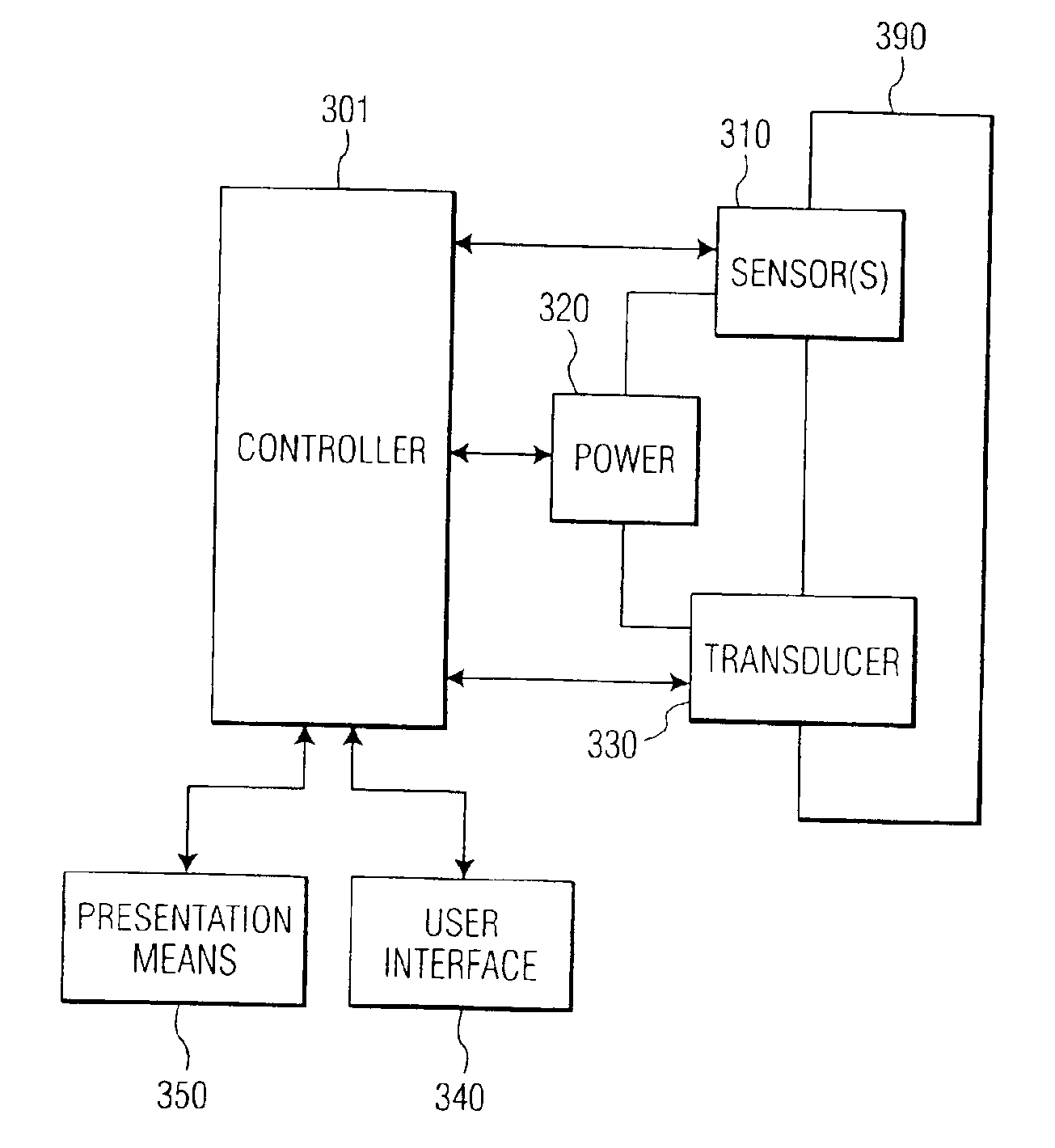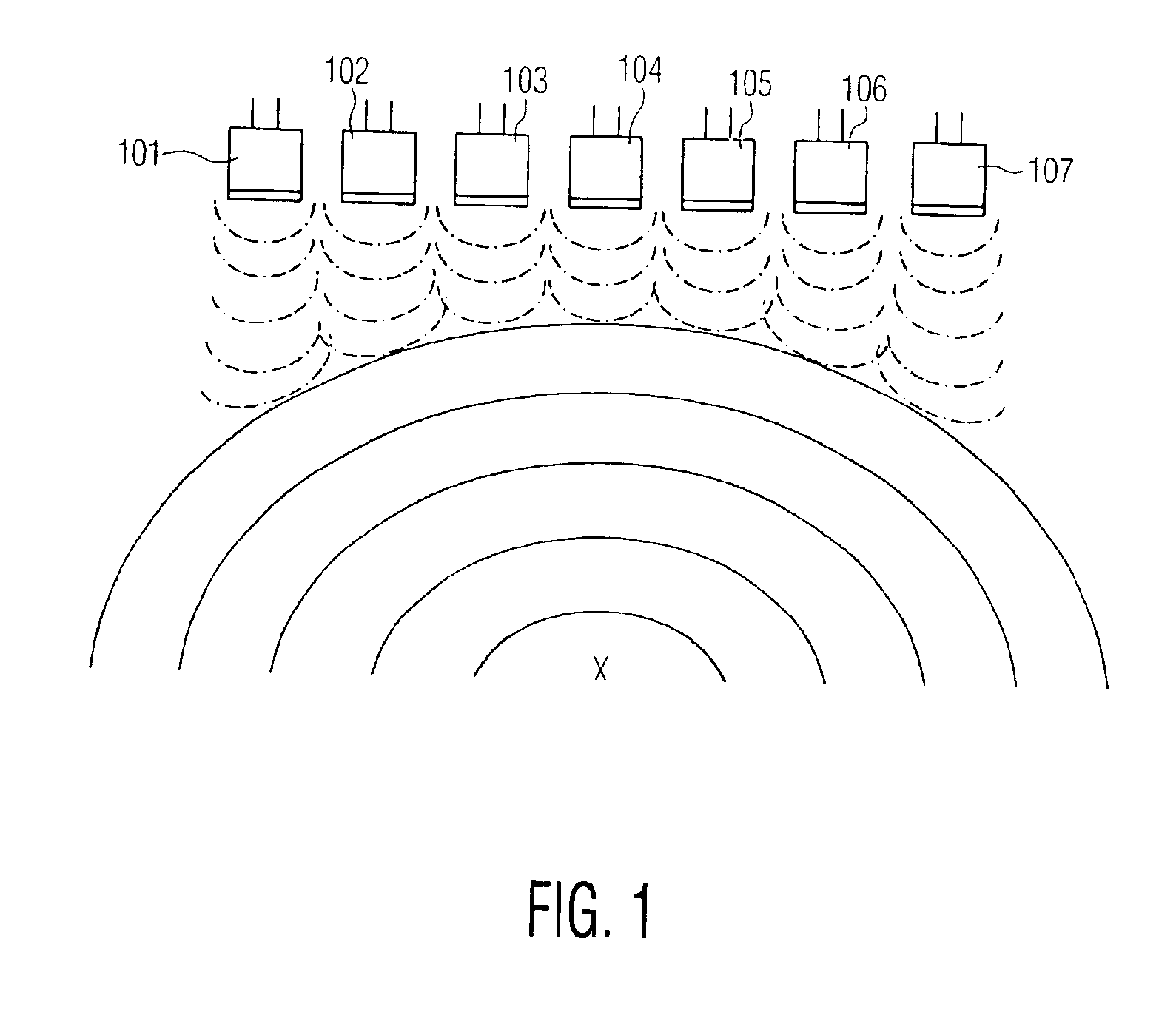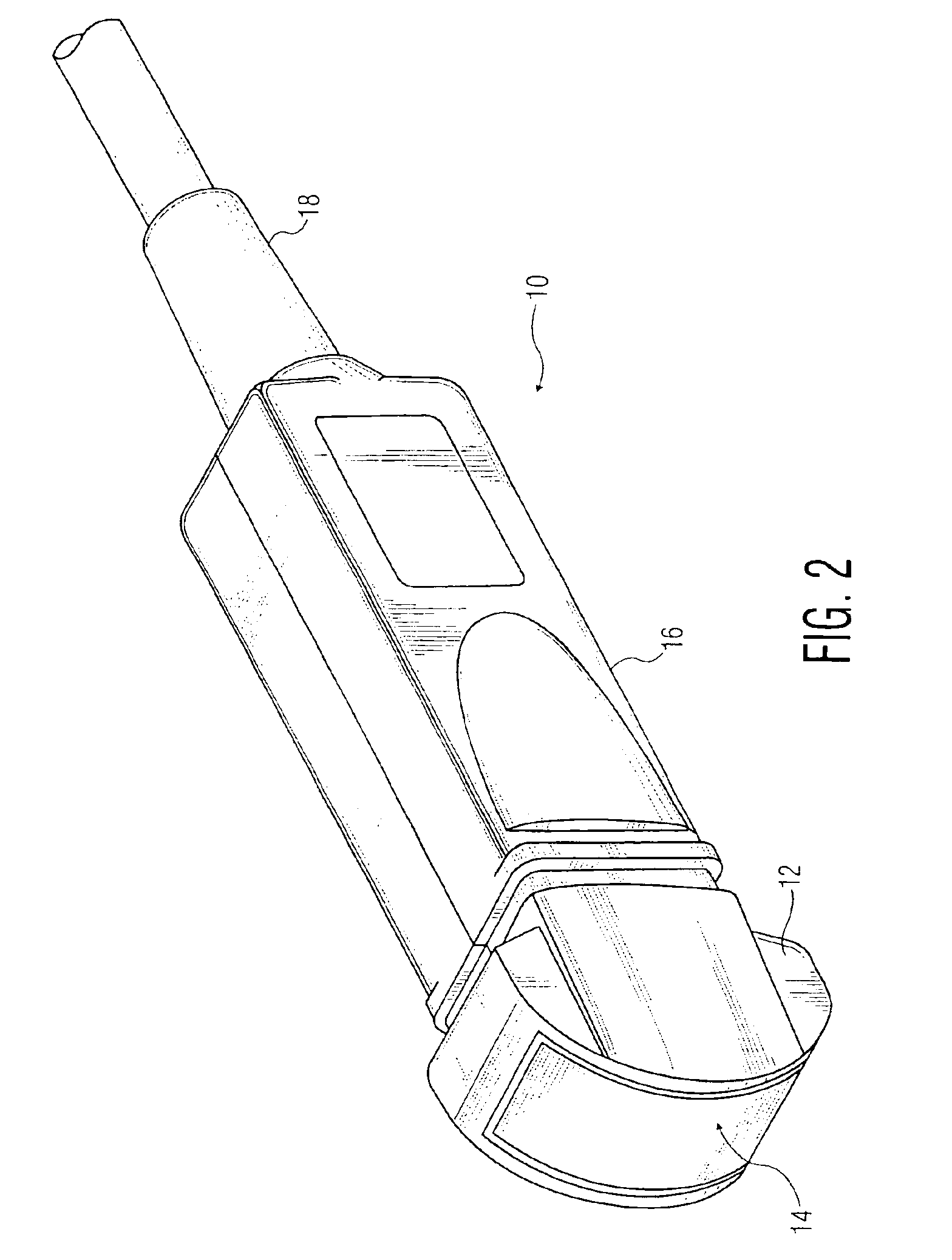Imaging ultrasound transducer temperature control system and method using feedback
a technology of ultrasound transducer and temperature control system, which is applied in the direction of ultrasonic/sonic/infrasonic diagnostics, instruments, applications, etc., can solve the problems of less penetration ability of high frequency ultrasonic waves, less well defined received images, and greater penetration depth of frequency ultrasonic waves. to achieve the effect of reducing the temperature of imaging ultrasonic transducers
- Summary
- Abstract
- Description
- Claims
- Application Information
AI Technical Summary
Benefits of technology
Problems solved by technology
Method used
Image
Examples
Embodiment Construction
[0049]The present invention is directed to a novel system and method of controlling the radiant heat from the patient contact surface of an ultrasonic transducer. Although the details of implementation may be different in different embodiments, the present invention is not limited to any particular type of ultrasonic transducer or any particular mode of imaging and / or data analysis. The presently preferred embodiments of the present invention control the temperature of the transducer face by changing operating system parameters based on feedback from temperature sensing elements placed in the transducer. Which operating parameters are changed and the manner in which the chosen parameters change depends upon the imaging mode, the type of heat dissipation system being used (if any), the particular ultrasonic system, etc. In addition, these choices may be preset by the construction of the ultrasonic system, under the control of the ultrasonic system user, or a combination of the two.
[0...
PUM
| Property | Measurement | Unit |
|---|---|---|
| frequency | aaaaa | aaaaa |
| frequency | aaaaa | aaaaa |
| frequency | aaaaa | aaaaa |
Abstract
Description
Claims
Application Information
 Login to View More
Login to View More - R&D
- Intellectual Property
- Life Sciences
- Materials
- Tech Scout
- Unparalleled Data Quality
- Higher Quality Content
- 60% Fewer Hallucinations
Browse by: Latest US Patents, China's latest patents, Technical Efficacy Thesaurus, Application Domain, Technology Topic, Popular Technical Reports.
© 2025 PatSnap. All rights reserved.Legal|Privacy policy|Modern Slavery Act Transparency Statement|Sitemap|About US| Contact US: help@patsnap.com



